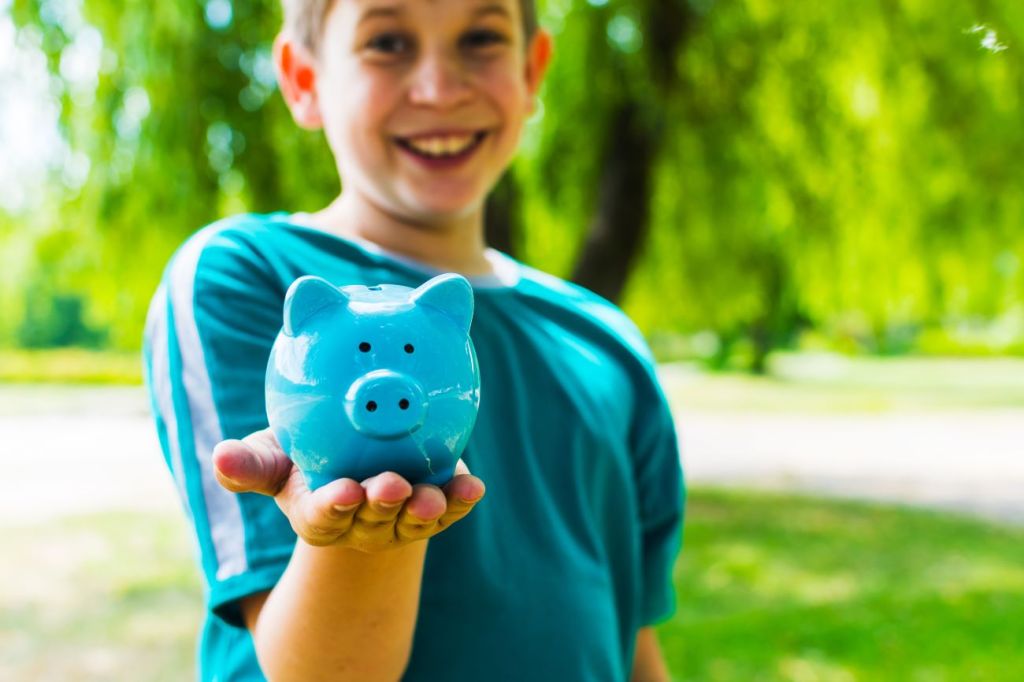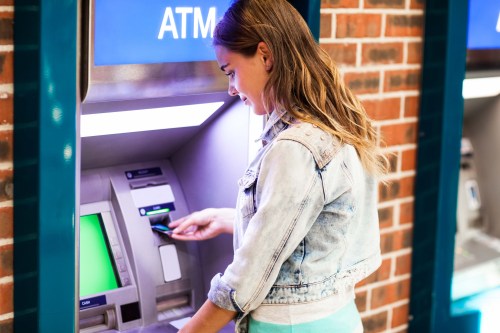Why Kids and Teens Should Start Saving Money Early

As parents, we want our kids to be carefree for as long as possible: to have few responsibilities, hang out with friends, and just have fun. Kids and teens aren’t ready to buckle down and learn about saving money, right?
Think again. Experts agree that by the time kids are seven or eight and tackling basic math at school, they’re ready to learn more about money—what it’s worth, how to save it, and how to plan for the future. Not only are tweens and teens primed and ready for financial basics but teaching them the benefits of saving money from an early age helps set them up for a lifetime of financial security.
Key takeaways
- Saving money is an important building block to financial independence.
- The earlier kids and teens start saving, the more likely it will become a habit.
- Saving early and often means kids and teens can take advantage of compound interest.
- Help kids and teens prioritize savings by “paying yourself first”
- Kids and teens can boost their savings by finding ways to earn more money.
Why saving money early is important
If financial freedom is the goal in adulthood, then saving money is one of the foundational building blocks needed to make that goal a reality. Unless your kids learn how to save money, working toward a place of comfort and independence could be an uphill battle for them (unless your family has a bottomless well of cash). That’s why it’s a good idea to get them used to this idea early so it doesn’t come as a surprise later on.
Saving money teaches kids and teens the value of a dollar
When it looks like buying a T-shirt or a week’s worth of groceries is as easy as tapping a debit card, we can’t really blame kids and teens for not thinking about how to save money. But by keeping track of their own funds and watching that amount shrink with each tap, kids will quickly learn what a dollar can buy—and what it can’t. From there, it’s easier for teens to work toward saving money, allowing them to buy things they maybe can’t afford today.
Using a money-management app like Mydoh can help kids—and parents—keep an eye on their funds.

The earlier kids start, the sooner they can make saving a habit
Spending is easy, but learning how not to spend money is hard—even for adults. The earlier kids learn how to save money, the more it will become a part of their value system and a habit. According to experts, kids tend to develop their financial habits and values between the ages of six and 12.
It helps kids become self-reliant and independent
It may be less effort for your tween or teen to dip into an account at the Bank of Mom and Dad, but do you know what feels better? Not needing to ask for permission. By saving money for a future date—whether they choose to spend it on a pizza night or a grad trip—tweens and teens will realize that they can learn to rely on themselves to get what they want. That’s a powerful feeling.
Tip: Mydoh’s kids savings calculator is a simple and fun way to calculate how long it’ll take to reach their goal.
Kids can learn to stay out of debt
Discipline and self-control can be difficult for anyone, especially when it comes to money. The fact is, we won’t always be able to afford the things we want right away—at least not without going into debt. But kids who learn self-control are less likely to have credit problems later in life.
Read more about what is debt for kids.
They can take advantage of compound interest
Compound interest essentially means that your money can make money. If your kid deposits funds (usually in a registered savings account or a tax-free savings account) and leaves them alone, the amount of interest they make will increase every year. That’s because they will start to earn interest on their interest.
While your 14-year-old might think that 24 is forever away, remind them that that day will come. The more years your tweens and teens keep money in their account earning compound interest, the more money they’ll make. It’s not quite as easy as getting cash in a birthday card, but it’s pretty close.
Compound interest example
Here’s an example of how compound interest can help you save more money:
| Year | Balance on January 1 | Interest earned (2.5%) | Balance on December 31 |
| 1 | $1,000 | $25 | $1,025 |
| 2 | $1,025 | $25.63 | $1,050.63 |
| 3 | $1,050.63 | $26.27 | $1,076.90 |
| 10 | $1,248.86 | $31.22 | $1,280.08 |
| 25 | $1,808.73 | $45.22 | $1,853.95 |
Kids can practise having an emergency fund
Do kids really need an emergency fund? While they may not have to ensure that basic expenses like shelter, food, and medicine are paid for, kids could blow a tire on their bike or lose a textbook. Good values around money means having a little set aside for the unexpected. If teens are able to dip into their own emergency fund when life goes sideways, it can instill confidence that they’ll be able to weather life’s surprises. Starting the habit of saving can help insulate kids against job loss or appliance breakdowns when they’re older.
5 money-saving tips for kids and teens
There are plenty of ways that kids can start to save their money, and they all involve either earning more or spending less. Get your children started with one of these five ways to save money for a rainy day or for bigger purchases they have their eye on.
1. Use the “pay yourself first” technique
Most people pay bills and other necessities first, splurge a little and then attempt to save what’s left over. But let your kids know that there’s a better way. The “pay yourself first” technique involves saving a certain amount of the total (say, 20 per cent) and then paying for necessities. If there’s any money left, that’s when they can treat themselves.
Though this technique is often used by people who have a steady paycheque, it’s something that kids can practise with their allowance or money from part-time and summer jobs. With the Mydoh app, parents can quickly and easily set up a weekly allowance payment that is deposited on the same day each week, like a real-life payday.
2. Find easy spending trade-offs
A good money habit for parents and kids alike to get into is analyzing purchases before opening their wallets. Encourage your child to ask themself these three questions:
a. Do I need this item?
b. If I don’t need it, how will it make my life better?
c. Is there a way for me to make my life better in a similar way that costs less money?
While there might not always be an easy in-the-moment swap, taking time to slow down and ask questions means your kids are more likely to spend mindfully. And in some cases, they might be able to make budget-conscious swaps. Here are some examples:
- Make lunch (at least some days) instead of ordering at a cafeteria or restaurant
- Hunt for cool vintage and second-hand clothes rather than always buying new
- Ask your favourite yoga studio or martial arts school to exchange lessons for sweat equity by volunteering to help clean or do other chores
- Hit up free concerts and museums or seek out pay-what-you-can days

3. Find ways to earn more cash
Instead of offering to buy your kid new sneakers when their old ones are still perfectly functional, encourage them to take on a bit of extra work to earn the money. Here are some standard money-making ideas for kids and teens:
- Pet-sit or walk dogs
- Babysit
- Plan and host a garage sale
- Mow lawns, rake leaves, or shovel driveways
- Tutor other students
- Selling things online
In the Mydoh app, you can also create tasks for household chores (think: emptying the dishwasher or cleaning out the garage) with various payment amounts attached. When your child finishes a task and marks it as “complete,” they’ll get paid on the following Saturday.
4. Take advantage of student discounts
Whether your child is in middle school or looking ahead to university, they could be eligible for a student discount on their favourite subscription services, electronic brands, fitness memberships, and clothing stores. Sometimes these discounts are store-based (meaning they have to sign up with the individual retailer) and sometimes they’re available through a student discount card like SPC, ISIC, or UNiDAYS. Either way, signing up could mean 10 to 30 per cent in savings—or sometimes more—on things your kids already buy. Using these discounts is a smart money-saving tip that takes minimal effort.
5. Put cash gifts from birthdays and holidays directly into savings
If Grandma loves to slip a crisp $50 bill into birthday cards, that’s money in the (literal) bank. Your child can save part or all of their money from those big events for a larger, more rewarding purchase down the road.
How to continue the conversation on saving
Teaching kids and teens how to save money isn’t a one-time talk. (If only it were that easy!) To help your child develop good habits, money talk needs to become part of a regular routine. There’s just one problem: No kid likes to feel preached to.
That’s where an app like Mydoh can help. It will give them a sense of independence as they learn to manage their money at their own pace.
And since you can track their spending from your own app (and even respond to their spending with an encouraging emoji), chatting with your kid about money becomes a lot less awkward.
Teach your teens how to start saving money with Mydoh
Learning how to save money early is one of the best ways for kids to develop positive values and habits when it comes to money—and most of that education is going to fall to you. But you’re not alone. Mydoh can help you raise a financial smarty-pants who understands the benefits of self-control, planning, and saving their hard-earned cash.
Download the Mydoh app so your child can start saving money towards their saving goals.
This article offers general information only and is not intended as legal, financial or other professional advice. A professional advisor should be consulted regarding your specific situation. While the information presented is believed to be factual and current, its accuracy is not guaranteed and it should not be regarded as a complete analysis of the subjects discussed. All expressions of opinion reflect the judgment of the author(s) as of the date of publication and are subject to change. No endorsement of any third parties or their advice, opinions, information, products or services is expressly given or implied by Royal Bank of Canada or its affiliates.














